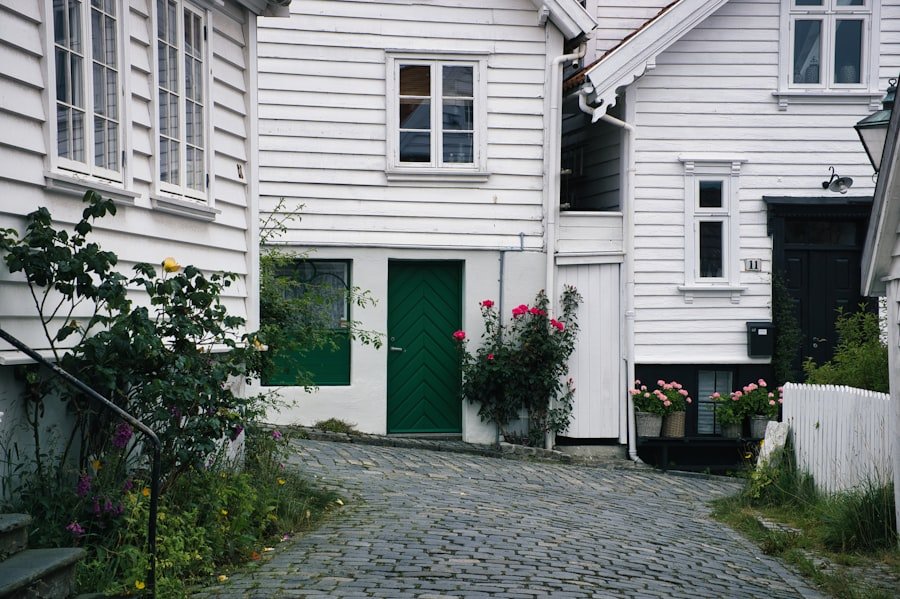

How to Use “Det finnes” and “Det er” in Norwegian
In the Norwegian language, the phrases “Det finnes” and “Det er” are often used interchangeably by learners, leading to confusion. However, they serve distinct purposes and convey different meanings. “Det finnes” translates to “There exists” or “There are,” and is primarily used to indicate the existence or presence of something.
On the other hand, “Det er” translates to “There is” or “It is,” and is used to identify or describe something specific. Understanding these nuances is crucial for effective communication in Norwegian. The distinction between these two phrases can be subtle yet significant.
While both can refer to the existence of objects or concepts, “Det finnes” tends to focus on the availability or existence of something in a broader sense, whereas “Det er” is more about defining or identifying a particular item or situation. This understanding is essential for learners who wish to express themselves accurately in various contexts. Start learning Norwegian at the NLS Norwegian Language School now!
Table of Contents
ToggleSummary
- “Det finnes” is used to express the existence or presence of something, while “Det er” is used to identify or describe something.
- Use “Det finnes” when talking about the existence of something in Norwegian, such as “Det finnes mange bøker på biblioteket” (There are many books in the library).
- Examples of how to use “Det finnes” in sentences include “Det finnes ingen unnskyldning for dårlig oppførsel” (There is no excuse for bad behavior) and “Det finnes mange flotte restauranter i byen” (There are many great restaurants in the city).
- Use “Det er” when identifying or describing something in Norwegian, such as “Det er en vakker dag i dag” (It is a beautiful day today).
- Examples of how to use “Det er” in sentences include “Det er en stor hund i hagen” (There is a big dog in the garden) and “Det er mange mennesker på bussen” (There are many people on the bus).
- “Det finnes” is used to express the existence or presence of something, while “Det er” is used to identify or describe something in Norwegian.
- Use “Det finnes” to form questions by starting the sentence with “Finnes det” such as “Finnes det noen ledige stillinger?” (Are there any job vacancies?).
- In negative sentences, “Det finnes” becomes “Det finnes ikke” such as “Det finnes ikke nok plass til alle” (There is not enough space for everyone).
- Common mistakes to avoid when using “Det finnes” and “Det er” include mixing up their usage and forgetting to conjugate the verbs correctly.
- Practice exercises to improve your use of “Det finnes” and “Det er” in Norwegian include creating sentences using both expressions and asking for feedback from a language partner or tutor.
When to use “Det finnes” in Norwegian
“Det finnes” is employed when one wants to assert that something exists or is available. It is often used in contexts where the speaker wishes to highlight the presence of an object, person, or idea without necessarily providing a detailed description. For instance, if someone were to say, “Det finnes mange bøker i biblioteket,” it translates to “There are many books in the library,” indicating the existence of books without elaborating on their titles or genres.
This phrase is particularly useful when discussing general truths or facts about the world. For example, one might say, “Det finnes flere måter å lære norsk på,” meaning “There are several ways to learn Norwegian.” Here, the speaker is not identifying a specific method but rather acknowledging the existence of multiple options available for learning the language.
Examples of how to use “Det finnes” in sentences

To illustrate the usage of “Det finnes,” consider the following examples: “Det finnes en restaurant i nærheten,” which means “There is a restaurant nearby.” This sentence conveys the existence of a restaurant without specifying its name or type. Another example could be, “Det finnes mange vakre steder i Norge,” translating to “There are many beautiful places in Norway.” This statement highlights the abundance of beautiful locations in the country, again without delving into specifics. Additionally, one might say, “Det finnes ulike kulturer i verden,” meaning “There are different cultures in the world.” This sentence serves to acknowledge the diversity of cultures globally, reinforcing the idea that “Det finnes” is often used to express general truths about existence.
When to use “Det er” in Norwegian
In contrast, “Det er” is used when one wishes to identify or describe something specific. It serves as a means of providing information about an object, person, or situation. For instance, if someone says, “Det er en katt på bordet,” it translates to “There is a cat on the table.” Here, the speaker identifies a specific cat and its location, making it clear that they are referring to a particular instance rather than a general existence.
Moreover, “Det er” can also be used to express opinions or states of being. For example, one might say, “Det er kaldt i dag,” meaning “It is cold today.” In this case, the phrase conveys a specific condition rather than merely stating that cold weather exists. This distinction highlights how “Det er” can be employed in various contexts beyond mere existence.
Examples of how to use “Det er” in sentences
To further clarify the usage of “Det er,” consider these examples: “Det er mange mennesker på konserten,” which translates to “There are many people at the concert.” This sentence identifies a specific event and describes the number of attendees present. Another example could be, “Det er en vakker solnedgang i kveld,” meaning “It is a beautiful sunset tonight.” Here, the speaker describes a particular sunset, emphasising its beauty. Additionally, one might say, “Det er viktig å lære norsk,” which translates to “It is important to learn Norwegian.” In this case, the phrase expresses an opinion about the significance of learning the language, showcasing how “Det er” can be used to convey subjective statements as well.
Using “Det finnes” to express existence or presence of something

When using “Det finnes,” it is essential to remember that this phrase focuses on existence rather than identification. It allows speakers to assert that something exists without needing to provide further details. For instance, if someone states, “Det finnes en løsning på problemet,” it means “There is a solution to the problem.” This statement acknowledges that a solution exists without specifying what that solution might be.
Moreover, “Det finnes” can also be employed in discussions about availability. For example, one might say, “Det finnes mange ressurser for å lære norsk,” translating to “There are many resources for learning Norwegian.” This usage highlights not only the existence of resources but also their relevance for those seeking to learn the language.
Using “Det er” to identify or describe something
Conversely, when using “Det er,” speakers are typically identifying or describing something specific. This phrase allows for more detailed communication about an object or situation. For instance, if someone says, “Det er en ny film på kino,” it translates to “There is a new film at the cinema.” Here, the speaker identifies a particular film and its location.
Additionally, “Det er” can be used to provide descriptions that convey opinions or feelings. For example, one might say, “Det er spennende å lære norsk,” meaning “It is exciting to learn Norwegian.” This statement not only identifies learning Norwegian as an activity but also expresses a positive sentiment towards it.
How to form questions using “Det finnes” and “Det er”
Forming questions with both phrases follows a straightforward structure in Norwegian. To ask if something exists using “Det finnes,” one might say, “Finnes det en butikk her?” which translates to “Is there a shop here?” This question directly inquires about the existence of a shop in a specific location. On the other hand, when forming questions with “Det er,” one could ask, “Er det en katt i hagen?” meaning “Is there a cat in the garden?” This question seeks to identify whether a specific cat is present in that location.
Both structures allow for clear communication and facilitate inquiries about existence and identification.
Using “Det finnes” and “Det er” in negative sentences
When negating sentences with these phrases, it is essential to use appropriate structures. For instance, when negating “Det finnes,” one would say, “Det finnes ikke noen bøker her,” which translates to “There are no books here.” This sentence asserts that books do not exist in that location. Similarly, when negating sentences with “Det er,” one might say, “Det er ikke kaldt i dag,” meaning “It is not cold today.” This structure effectively communicates that the specific condition being described does not apply at that moment.
Understanding how to form negative sentences with both phrases enhances clarity and precision in communication.
Common mistakes to avoid when using “Det finnes” and “Det er”
One common mistake learners make is using these phrases interchangeably without considering their distinct meanings. For example, saying “Det finnes en katt på bordet” instead of “Det er en katt på bordet” can lead to confusion since the former implies existence while the latter identifies a specific cat. It’s crucial for learners to grasp these differences to avoid miscommunication.
Another frequent error involves incorrect negation. Learners may mistakenly say “Ikke finnes” instead of “finnes ikke.” Proper word order is vital in Norwegian; thus, ensuring that negation follows the correct structure will help convey intended meanings accurately.
Practice exercises to improve your use of “Det finnes” and “Det er” in Norwegian
To solidify understanding and usage of these phrases, engaging in practice exercises can be beneficial. One exercise could involve creating sentences using both phrases based on given prompts. For example: “Write a sentence using ‘det finnes’ about your favourite food.” This encourages learners to think critically about how they express existence.
Another effective exercise could involve transforming affirmative sentences into negative ones using both phrases. For instance: “Change ‘det er varmt i dag’ into a negative sentence.” Such exercises not only reinforce grammatical structures but also enhance overall fluency in Norwegian. For those eager to master these nuances further and improve their Norwegian language skills comprehensively, enrolling in courses at NLS Norwegian Language School in Oslo can be an excellent choice.
The school offers tailored programmes designed for various proficiency levels and focuses on practical language use in real-life situations. With experienced instructors and immersive learning environments, students can gain confidence in their language abilities while mastering essential concepts like “det finnes” and “det er.” Whether you are starting your journey or looking to refine your skills, NLS provides an ideal setting for language acquisition and cultural understanding.
Register for a Norwegian class at the NLS Norwegian Language School now!
If you want to learn Norwegian, you can register for classes here. We look forward to hearing from you and helping you become fluent in Norwegian.





